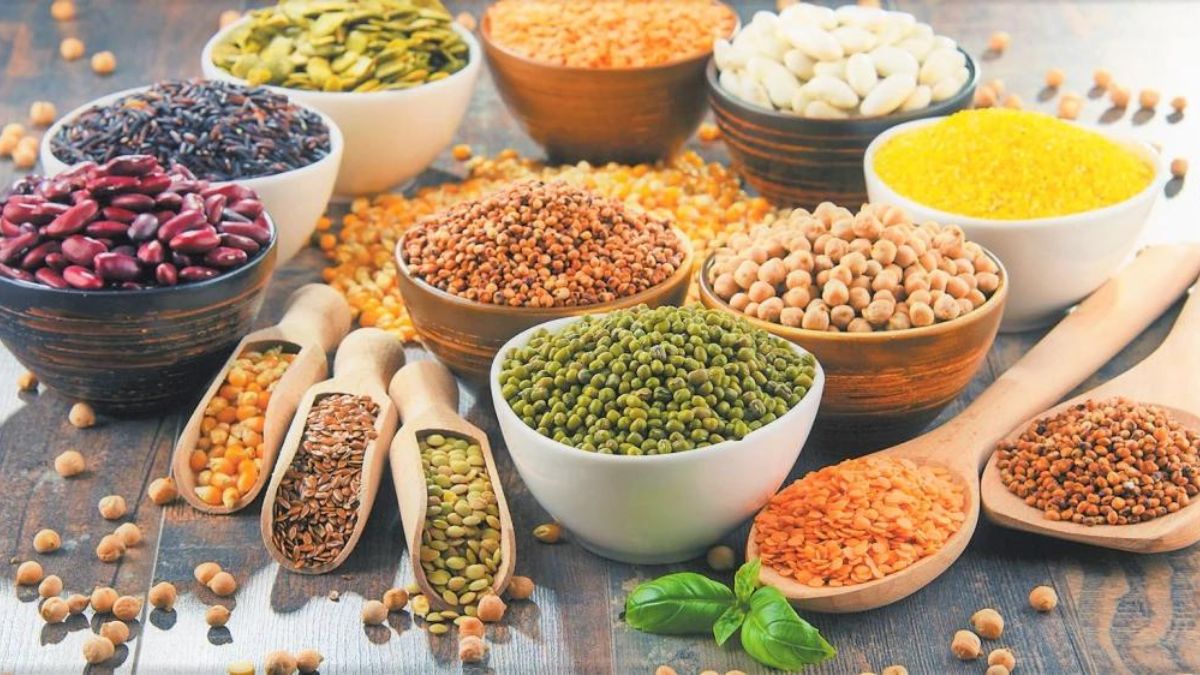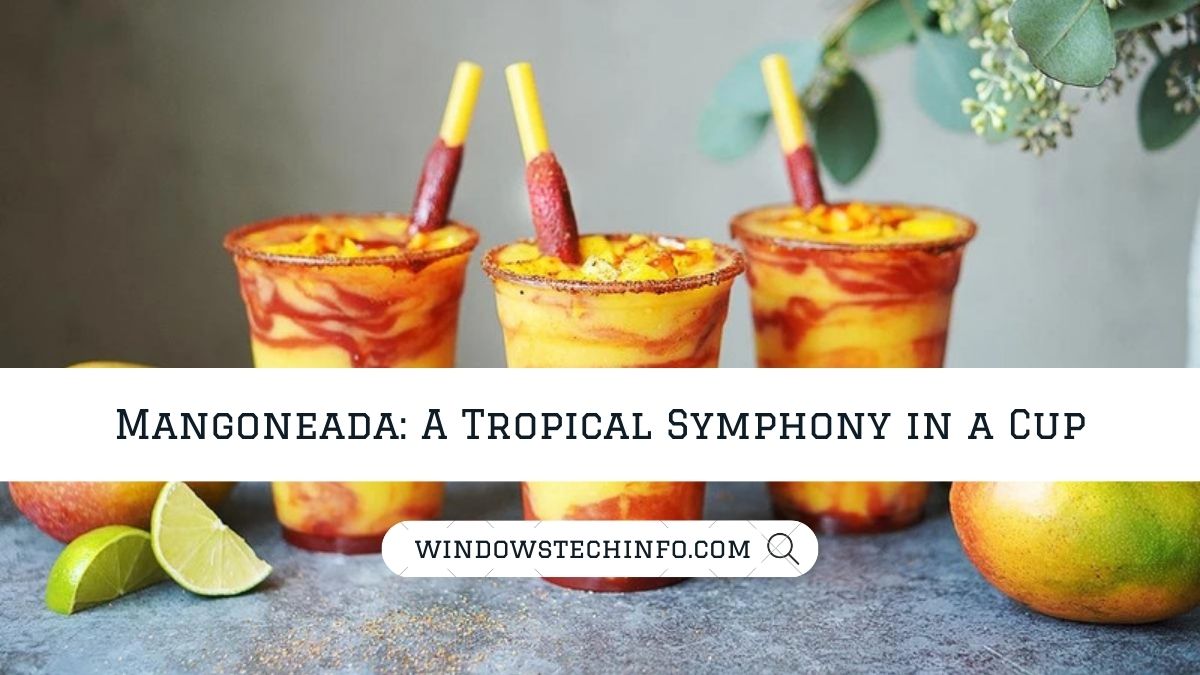FOOD
Unveiling the Marvels of Kapustapusto: A Comprehensive Guide to a Unique Culinary Experience

Among the many delectable dishes available, Kapustapusto stands out as an unforgettable treat thanks to its one-of-a-kind combination of ingredients and cultural influences. Kapustapusto is an interesting meal, and this page gives readers a thorough introduction to it by exploring its history, ingredients, and preparation technique.
Understanding Kapustapusto
Eastern European countries, including Russia and Ukraine, are home to the gastronomic treasure known as kapustapusto. The varied cultural influences and long history of the area have left their mark on Kapustapusto, a robust cabbage-based cuisine that has changed little over the years. The very name is a combination of the terms “kapusta,” meaning cabbage, and “pusto,” meaning empty or hollow; this demonstrates how the imaginative combination of ingredients elevates the humble cabbage to the level of a culinary masterwork.
The Ingredients
- Cabbage: The main attraction, cabbage is the base of Kapustapusto. Its substantial taste and adaptability make it an ideal base for the plethora of components that come after it.
- Meat: Pork or sausage is a common ingredient in kapustapusto, which gives the meal a savory flavor and protein. With its smokey, meaty flavor, this item has the potential to completely transform the meal.
- Grains: Kapustapusto is typically enhanced with barley or rice to create a robust and satisfying dish. With each mouthful, the grains bring out the other flavors and create a symphony of flavors.
- Vegetables: The dish’s colorful and lively character is enhanced by carrots, onions, and bell peppers. The meat’s savory overtones are balanced by the sweetness and depth imparted by these veggies.
- Seasonings and Spices: Kapustapusto gets its rich, fragrant flavor from a blend of garlic, paprika, and bay leaves. To take the cuisine to the next level, the spices must be carefully chosen and balanced.
The Art of Preparation
- Chopping and Sautéing: Start by carefully chopping the bell peppers, cabbage, onions, and carrots. Put these veggies in a big saucepan and sauté them until they soften and unleash their flavors.
- Meat Integration: Brown the selected meat and let it flavor the dish. The richness and intricacy of Kapustapusto are enhanced by this phase.
- Grain Addition: Add the grains and mix to combine so they absorb all of the meat and veggie flavors. This process adds to the dish’s filling texture as well.
- Spice Harmony: Create a symphony of flavors by introducing the spices and seasonings in a balanced manner. Simmering the mixture helps the flavors combine and creates a delicious consistency.
- Simmering to Perfection: Simmer the ingredients in the Kapustapusto for a few hours so they may combine and create a layered, rich flavor. To bring out this culinary masterwork to its maximum flavor, slow cooking is essential.
Conclusion
Finally, Kapustapusto is more than just food; it is a memorial to the rich history and innovative spirit of Filipino cuisine. Its long history, careful preparation, and distinctive combination of ingredients make it an absolute must-try for foodies. No matter your level of experience in the kitchen, delving into the realm of Kapustapusto will take you on a culinary adventure that will satisfy your cravings for Eastern European food and teach you to appreciate its artistic side. Get ready for a culinary adventure with Kapustapusto by rolling up your sleeves and gathering the ingredients!
FAQs
What does the name “Kapustapusto” mean?
The term “Kapustapusto” is an amalgam of the terms “kapusta,” meaning cabbage, and “pusto,” meaning empty or hollow. Showing how an average cabbage may be made into a tasty and filling dinner, illustrates the innovative use of ingredients.
Is Kapustapusto a vegetarian dish?
Even though kapustapusto can be made vegetarian by leaving out the meat, traditional recipes usually call for pork or sausage. Nevertheless, the dish’s adaptability permits personalization to accommodate different nutritional choices.
Can I use other types of cabbage for Kapustapusto?
In a heartbeat! While green cabbage is the most typical, red or Savoy cabbage are great alternatives that will give your dish a unique twist. Cabbage comes in a variety of varieties, each with its distinct taste and texture.
What is the significance of grains in Kapustapusto?
Kapustapusto would not be the same without the addition of grains like barley or rice, which provide bulk and nourishment. They improve the dish’s flavor and texture by soaking up the flavors of other ingredients.
Are there regional variations of Kapustapusto?
Indeed, Kapus tapusto may be found in a variety of forms across Eastern Europe. By drawing on regional ingredients and cooking techniques, each area’s version of the meal may be unique. A wide variety of Kapus tapusto experiences can be had by delving into these variants.
FOOD
çeciir: Unveiling the Versatile Legume

Chickpeas, or çeciir, are the unsung heroes of the nutritional and gastronomic world. This humble bean has been given much praise for its adaptability and numerous health advantages, but it also has a long and interesting cultural past and a special position in the cuisines of many countries.
Understanding the Significance of çeciir
The seeds of chick or Cicer arietinum because they are known in the scientific community, are full of nutrient-rich legumes that have been farmed for millions of years. Small, spherical, and beige, beans are an excellent supply of plant-based protein, fiber, vitamins, and minerals. Their beneficial impact on health and nutrition has secured them an important place in the diets of numerous individuals.
çeciir and Its Historical Roots
The use of çeciir as a staple meal may be traced back to the ancient civilizations of Mesopotamia and the Mediterranean. In all likelihood, chickpeas were first cultivated about the year 7500 BCE. These legumes are so important to humanity that they are described in ancient documents and have even been discovered in archaeological digs.
The Cultural Impact of çeciir
For many individuals, chickpeas symbolize a key component of their heritage of culture, as well as a food staple. Popular foods in the region of the Middle East that include chickpeas include hummus and fritters. Similar to the way chickpeas are used in Indian cuisine, specifically in the chana spice mixture and chickpeas stew.
Health Benefits of Consuming çeciir
There are several advantages to your health from eating chickpeas. They are a great supplement to a vegetarian or vegan diet since they provide so much protein. The high fiber content of chickpeas makes them a useful food for promoting digestive health and weight management.
çeciir in Culinary Delights
One of the extremely numerous characteristics that make chickpeas so special is how versatile they are in the kitchen. It’s conceivable to make anything from flavourful stews to refreshing sandwiches with these beans. Given their versatility, chickpeas may be used in both sweet and savory applications due to their subtle flavor and pleasing texture.
çeciir: A Sustainable Crop
Chickpeas help create a more sustainable agricultural system, which is one of its main benefits. Crop rotation that includes chickpeas is beneficial because of the legume’s famed nitrogen-fixing abilities. Moreover, they are a sustainable crop since their strong roots stop the soil from washing away.
How to Grow çeciir in Your Garden
Chickpeas are an easy crop to cultivate in the garden for those who enjoy doing so. The only thing that they need is some sort of well-drained soil for them to thrive in. To make sure you have an uninterrupted supply of these healthy legumes, as well you may intend to plant some chickpeas in the gardens.
çeciir Recipes for a Flavorful Experience
Chickpeas have been known to improve the aroma of an extensive range of cuisines, both conventional and otherwise. You could prepare a delicious chickpea salad with chopped herbs and a lemon dressing or cook up an extensive chickpeas and vegetable stew. All sorts of happenings are possible.
çeciir: Nutritional Value
Chickpeas provide a wealth of beneficial nutrients. The protein, dietary fiber, folate, and manganese contained in only one cup of cooked chickpeas is remarkable. They’re minimal in fat, thus being good for the coronary arteries likewise.
çeciir in Global Cuisine
The humble chickpea has made its way into a broad variety of cuisines throughout the world. Pasta e ceci is a popular pasta dish in Italy that features these beans as the main component. Cocido madrileño, a traditional Spanish stew, features chickpeas as an important ingredient.
çeciir in Popular Culture
It’s not just in the kitchen where chickpeas have had an impact. They have become a cultural icon for vegetarianism and good eating. Hummus and other chickpea-based foods have become increasingly mainstream across the world.
çeciir: Challenges and Concerns
Chickpeas have many uses and advantages, but growing them isn’t without its difficulties. Some illnesses and pests can infect them, therefore taking preventative measures is essential. The harvest of chickpeas can also be affected by the weather.
Embracing çeciir in Your Diet
You should incorporate chickpeas into your daily meals on an ongoing schedule to take full advantage of their many uses and health benefits. These legumes are frequently used to serve as a nutritional and tasty ingredient in a variety of different foods, such as salads, sandwiches, soups, and some snacking.
Conclusion
Finally, chickpeas (or çeciir) are a highly adaptable legume with significant cultural and medical value. Along with having a significant role in environmentally conscious farming, its versatility in culinary applications also makes it an emerging force in the restaurant scene. When you dig down a bowl of guacamole or a bowl of garbanzo stew, go back on the chickpea’s remarkable trip from farm fields to your dining area.
FAQs
Are chickpeas and garbanzo beans the same thing?
In response to your question, both chickpea and garbanzo beans are synonyms that refer to the same bean.
Can I grow chickpeas in my backyard garden?
Absolutely! Chickpeas may be grown successfully in a home garden by the average gardener.
What are the health benefits of consuming chickpeas regularly?
Chickpeas are a nutrient-dense, healthy-for-the-heart food that also helps with digestion.
What is the origin of chickpeas?
These legumes have an extensive past and are thought to have originally originated in the region known as the Middle East.
How can I incorporate chickpeas into my daily meals?
Baked chickpeas are an excellent appetizer that can also be made either through or without the incorporation of chickpeas into other recipes.
FOOD
Mangoneada: A Tropical Symphony in a Cup

The entire world has been captivated by the mangoneada, an exquisite combination of Mexican preferences. Mangoneada has gone from becoming an unknown favorite to an international phenomenon, largely due to its seductive mixture of sweet, spicy, and acidic characteristics that manage to overcome barriers in cultures.
1. Unveiling the Origin Story
The rich history firmly ingrained in Mexican culture is at the center of every Mangoneada. Over the years, this frozen delight has transformed, staying true to its roots but including new flavors influenced by varied global tastes, all while drawing inspiration from the rich culinary tapestry of the area.
2. The Art of Crafting: Ingredients and Variations
A meticulous selection of ingredients is necessary to make the ideal Mangoneada. A symphony of tastes is defined by this tropical pleasure, which includes juicy mangoes, chile powder, and chamoy. Perfection in balancing sweetness, spice, and acidity may be yours as you peruse the recipes.
3. Mangoneada and Mexican Culture
Mangoneada is a symbol of Mexican culture as much as it is a drink. This frozen confection has become a universal symbol of celebration, enjoyed by people of all ages at anything from street sellers to family get-togethers.
4. Global Craze: Mangoneada Beyond Borders
The world’s population adores Mangoneada. Because of its distinctive taste, it has won over people all over the globe. Our eyes are captivated by the interesting ways in which many areas are embracing this exotic delight, putting their unique spin on the basic recipe.
5. Sip, Share, and Socialize: Mangoneada in the Digital Age
With the rise of modern media, Mangoneada has gone viral, taking over sites like TikTok and Instagram. Find out what’s new, what people are struggling with, and how fans are getting creative with their online displays of this tropical joy.
6. Health Benefits of Mangoneada
Despite its decadent taste, Mangoneada has several good health advantages. Learn about the health benefits of the main components and how enjoying this dessert in moderation may make you feel good.
7. DIY Mangoneada Bar: A Personalized Experience
You may recreate the Mangoneada bar experience in the comfort of your own home. With this entertaining and engaging notion, guests may put their spin on this tropical symphony, making every event more unique.
8. Mangoneada Shops: The Rise of Trendy Establishments
Dedicated businesses serving Mangoneada have sprung up to meet the demand, and they provide a wide range of tastes with distinctive twists. Learn about the history of Mangoneada businesses and the unique experiences they give.
9. Mangoneada vs. Other Frozen Treats: What Sets It Apart?
The unique things that set Mangoneada apart are brought to light when compared to other frozen delicacies. Explore the cultural importance, textural differences, and flavor similarities that make Mangoneada unique.
10. The Art of Presentation: Capturing the Perfect Shot
Mangoneada is all about presentation as much as it is about flavor. Master the art of presentation and find out how to take the ideal Instagram photo to take your Mangoneada experience to the next level.
11. Challenges in Making Mangoneada: Tips for Success
Difficulties may develop for individuals who venture into the realm of Mangoneada making. Make sure everything goes off without a hitch every time by learning to spot typical problems and implement solutions.
12. Future Trends: The Ever-Evolving Mangoneada Landscape
For Mangoneada, what is ahead? Look at forecasts on how the world of Mangoneada will change in the next years based on new trends, tastes, and combinations.
13. Conclusion
In conclusion, Mangoneada is an exploration of culture, taste, and creativity, not only a frozen dessert. Enjoy a tropical symphony that has no boundaries as you sip Mangoneada on the streets of Mexico or make your rendition in the comfort of your own home.
14. FAQs
1. Can I make Mangoneada with frozen mangoes?
Sure thing! To make your Mangoneada even more delightful, try using frozen mangoes.
2. What’s the best way to balance the spiciness in Mangoneada?
Find the sweet spot by playing about with the amount of chili powder; a little goes a long way.
3. Are there any non-spicy alternatives for Mangoneada?
You may use Tajin spice instead of chili powder if you like a milder flavor.
4. Can I use other fruits in Mangoneada?
You may add a modern spin by trying it with watermelon or pineapple instead of the classic mango.
5. How long can I store Mangoneada in the freezer?
If you must preserve mangoneada, eat it within a week for the most texture and flavor, but it is best eaten fresh.
FOOD
IntrepidFood.EU: A Culinary Adventure Unleashed

IntrepidFood.EU: As the culinary world is always evolving, Intrepid Food has become a symbol of excellence in food innovation and flavor. An adventure in sustainable cuisine built on the tenets of exploration, this endeavor is more than simply a meal; it’s an experience.
1. The Journey of IntrepidFood.EU
Come along on an adventure with IntrepidFood.EU as we uncover its origins and the forces that drove its creation. Learn the story of this spectacular food industry, from its modest origins to its meteoric climb to culinary fame.
2. A Glimpse into the Culinary Adventures
Immerse yourself in the varied cuisine created by Intrepid Food. Each supper reveals a tale of admiration and skill in the kitchen, ranging from traditional delicacies to more daring alternatives. Expect the pleasure of your taste buds caressed with an assortment of inviting choices.
3. Sustainable Practices in IntrepidFood.EU
Experience the pioneering work of Exploratory Food in the realm of sustainable cookery. Ask about how they are trying to lessen their impact on the surroundings by using sustainable methods, buying from nearby farms, and other environmentally friendly initiatives. Find out just how your dining out contributes to making the entire world a better environment.
4. Culinary Innovations and Unique Offerings
Discover the techniques used by Intrepid Food to create their innovative recipes. Discover what makes this culinary endeavor special among the mundane, from fusion masterworks to one-of-a-kind culinary concoctions.
5. Behind the Scenes: Meet the Chefs
Witness the master chefs at work as they bring Intrepid Food to life. Discover the stories behind the dishes and the people who make them, as well as the factors that inspire them. See the people behind the mouth-watering tastes.
6. Intrepid Food’s Social Responsibility
Examine the social responsibility initiatives undertaken by Intrepid Food. Find out how this food industry behemoth is making a difference outside of the kitchen, from lending a hand to local causes to undertaking humanitarian endeavors.
7. Customer Testimonials: Real Experiences
Check out the testimonials written by happy Intrepid Food customers. Find out why people keep coming back to Intrepid Food and how it has evolved into more than simply a restaurant—it’s a cornerstone of people’s lives.
8. Exploring the Intrepid Food Menu
Explore Intrepid Food’s vast menu virtually. Browse the extensive menu that offers something for every taste, from appetizers to sweets. Discover how Intrepid Food accommodates a wide range of preferences.
9. Ordering Process: Simple and Efficient
Find out how this streamlined ordering procedure works for your consumers. Whether they’re shopping online or in-store, Intrepid Food emphasizes efficiency and simplicity, making it easy for foodies to savor their passion.
10. Delivery Experience: Freshness Guaranteed
See how Intrepid Food makes sure your food stays fresh and delicious even after it’s in transit. Examine the steps done at every stage, from packing to logistics, to guarantee that your home eating experience is as fantastic as it gets.
11. Special Events and Collaborations
See what kinds of events and partnerships Intrepid Food frequently hosts. Investigate the fascinating events that bring a dash of originality to the eating experience as a whole, from themed evenings to associations with local artists.
12. Intrepid Food: A Global Culinary Experience
Intrepid Food brings the globe to your plate. Find out how. An international dining experience is at your doorstep at this culinary sanctuary, which draws inspiration from a variety of cuisines and is dedicated to diversity.
13. Challenges and Solutions in the Food Industry
Find out what problems Intrepid Food solves and how the food sector is affected. Discover the ins and outs of this venture’s handling of the dynamic culinary scene, from supply chain challenges to fickle customers.
14. Conclusion
Ultimately, IntrepidFood.EU is more than simply a restaurant—it’s an adventure, an encounter, and a dedication to perfection. This culinary sanctuary has revolutionized the way we eat by implementing sustainable methods and introducing innovative dining experiences. Come on an epicurean journey with Intrepid Food, where every taste is a piece of history.
15. FAQs
1. Is Intrepid Food only available in specific locations?
For the location of the Intrepid Food store closest to you, see their website. They have many locations.
2. Are the ingredients used by Intrepid Food organic?
To maintain their promise of the best quality, Intrepid Food only uses the freshest, organic ingredients wherever feasible in their recipes.
3. Can I customize my order at Intrepid Food?
As far as personal tastes and dietary restrictions are concerned, yes, Intrepid Food does provide customization possibilities.
4. How does Intrepid Food contribute to sustainability?
Sustainable practices are practiced by Intrepid Food through measures such as decreasing waste, sourcing locally, and developing eco-friendly activities.
5. What makes Intrepid Food’s culinary team unique?
Skilled and enthusiastic cooks who are part of the Intrepid Food crew infuse each dish with their unique style.
-

 TECH8 months ago
TECH8 months agoExploring the Exciting Features of PHP Version 8.1 for Enhanced Web Development
-

 CRYPTO4 months ago
CRYPTO4 months agoUnlocking the Potential: Understanding WalletConnect là gì
-

 NEWS5 months ago
NEWS5 months agoBestadvise4u.com News: Your Gateway to Informed Living
-

 ENTERTAINMENT5 months ago
ENTERTAINMENT5 months ago“кинокрадко” – Unmasking the Culprit Behind Film Piracy
-

 TECH4 months ago
TECH4 months ago“몽세리 266b+v”: Revolutionizing Technology for a Better Future
-

 HEALTH6 months ago
HEALTH6 months agoTough Tissue Muscle Connector: The Unsung Heroes of Movement
-

 WINDOWS11 years ago
WINDOWS11 years ago(solved)-Windows update cannot currently check for updates, because the service is not running. You may need to restart your computer
-

 WINDOWS9 years ago
WINDOWS9 years ago(Solved) – “How do you want to open this type of file (.js)?” Windows 8/8.1
